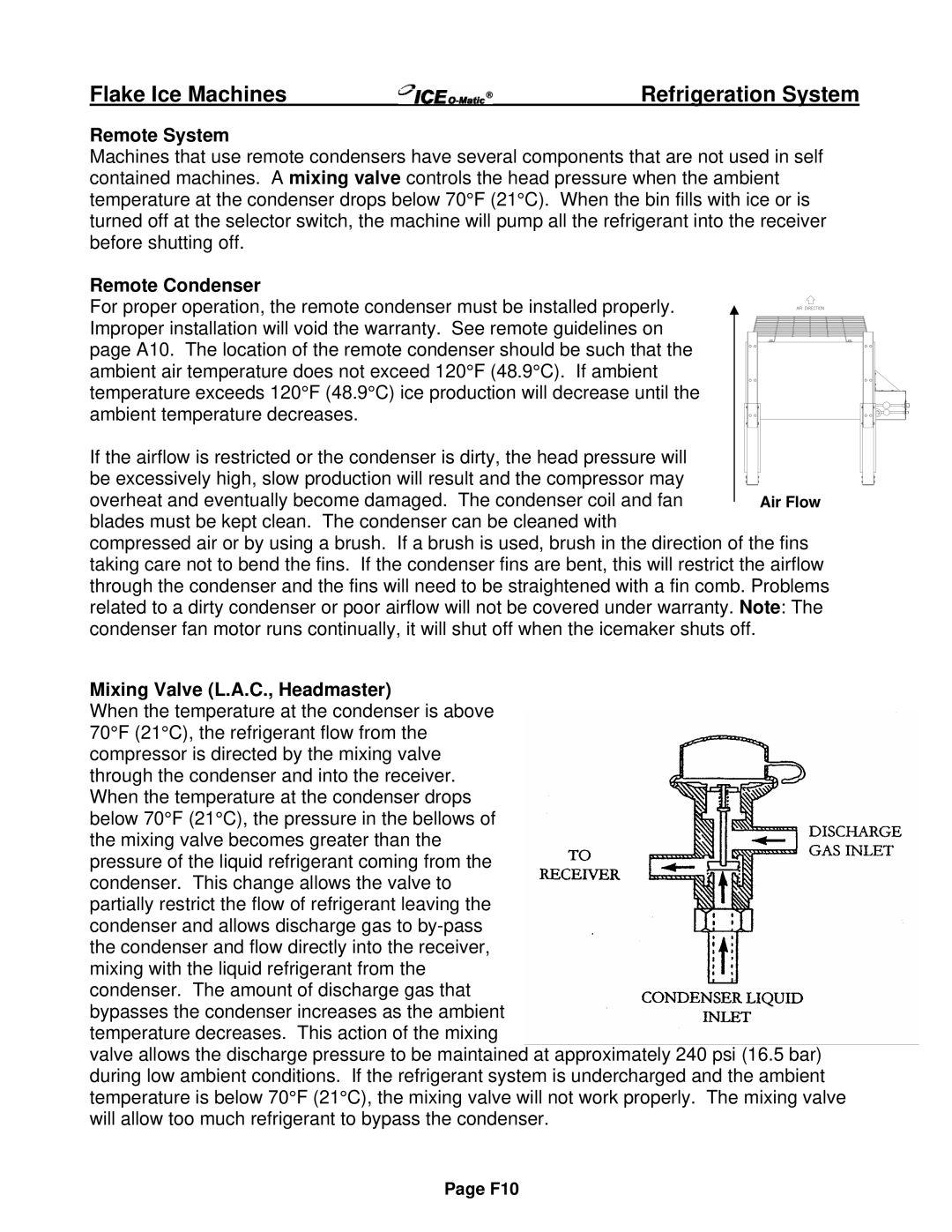EF Series, EMF Series specifications
Ice-O-Matic is a recognized leader in the ice-making industry, known for its innovative technologies and commitment to quality. Among its flagship products are the EMF Series and EF Series ice machines, designed to meet the demands of various commercial environments. These machines combine advanced features with user-friendly functionalities, making them suitable for restaurants, bars, hotels, and convenience stores.The EMF Series stands out with its capability to produce ice in a range of styles, including half cubes, full cubes, and gourmet ice. This versatile output makes it an excellent choice for establishments that require different ice types for various applications. The EMF machines are designed with a built-in storage bin, optimizing floor space while ensuring a continuous supply of ice. With production capabilities that can range from 200 to 800 pounds of ice per day, they cater exceptionally well to high-volume demands.
On the other hand, the EF Series focuses on efficiency and reliability. Featuring modular designs, these machines can be stacked or used in tandem, providing flexibility for businesses as their needs evolve. The EF Series offers a robust production range, capable of generating up to 1,500 pounds of ice daily, allowing it to service larger venues without sacrificing performance. The high-density foam insulation ensures that ice stays intact longer, reducing waste and enhancing overall efficiency.
Both series are equipped with Ice-O-Matic’s innovative Pure Ice technology, which not only ensures high-quality ice but also addresses concerns related to water quality. The built-in water filter options reduce impurities, resulting in clearer and more appealing ice. Additionally, these machines utilize an easy-to-clean design, promoting hygiene and maintenance simplicity. The front-access service doors facilitate straightforward maintenance, further minimizing downtime in busy environments.
Both EMF and EF Series machines are energy-efficient, boasting ENERGY STAR certifications. They are built with an environmentally friendly refrigerant, which helps establishments reduce their carbon footprint while saving on energy costs.
In conclusion, Ice-O-Matic's EMF and EF Series ice machines bring together cutting-edge technology, versatility, and efficiency, making them prime choices for any commercial establishment seeking reliable ice production. Their superior design features, user-friendly maintenance, and commitment to quality ensure that they meet the varied demands of the foodservice industry while promoting sustainability.

